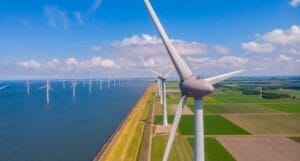Understanding Innovative Civil Engineering Projects
Innovative civil engineering projects represent a paradigm shift in traditional methodologies, integrating advanced construction technology and innovative structural design to redefine the landscape of the field. These projects, which extend beyond the mere construction of buildings and infrastructure, include the development of sustainable infrastructure systems that can withstand climate change and other environmental challenges. The unique characteristic of these projects is their ability to solve complex problems, enhance efficiency, and reduce environmental impact through the use of civil engineering software and other innovative tools. Innovation in civil engineering is not limited to the introduction of new technologies or materials. It also includes the development of novel design methodologies, construction techniques, and project management strategies. These innovative practices are causing a transformative shift in the field of civil engineering, leading to the development of projects that are more efficient, sustainable, and resilient. The integration of digital technologies, such as Building Information Modeling (BIM), Geographic Information Systems (GIS), and Computer-Aided Design (CAD) in civil engineering software, is playing a crucial role in enhancing the design, construction, and management of these projects. This combination of structural design and construction technology is the driving force behind the development of innovative civil engineering projects.
What are Innovative Civil Engineering Projects?
Innovative civil engineering projects encompass a broad spectrum of initiatives that utilize cutting-edge technologies, advanced methodologies, and civil engineering software. These projects often involve the integration of digital technologies like BIM, GIS, and CAD to improve the structural design, construction, and management of civil engineering projects. Moreover, the focus of these projects is on sustainability and resilience, characterized by the incorporation of green building technologies, renewable energy systems, and sustainable materials to minimize environmental impact and enhance resilience to climate change and other environmental challenges. Innovative civil engineering projects also extend to urban planning and the development of smart cities. These projects leverage digital technologies and data analytics to enhance urban livability and sustainability. They involve the integration of smart grids, intelligent transportation systems, advanced waste management systems, and water resource management to create urban environments that are more efficient, sustainable, and livable.

How is Innovation Shaping Civil Engineering?
Innovation is profoundly influencing civil engineering, with the integration of digital technologies and advanced methodologies transforming the way civil engineers design, construct, and manage projects. This transformation is leading to the development of projects that are more efficient, sustainable, and resilient, thanks to construction technology and civil engineering software. One of the most significant impacts of innovation in civil engineering is the increased efficiency in the design and construction processes. Civil engineering software, including BIM, GIS, and CAD, is enabling civil engineers to design and construct projects with greater accuracy and efficiency. These technologies also facilitate better project management, leading to improved collaboration and communication among project teams, and reduced construction errors. Furthermore, innovation is enhancing the sustainability and resilience of civil engineering projects. The incorporation of green building technologies, renewable energy systems, and sustainable materials is enabling civil engineers to design and construct projects that minimize environmental impact and enhance resilience to climate change and other environmental challenges. Lastly, in the realm of urban planning, innovation is transforming how civil engineers manage and maintain projects. Digital technologies and data analytics are empowering civil engineers to monitor and maintain projects in real-time, leading to improved project performance and reduced maintenance costs. This is particularly evident in the development of smart cities, where digital technologies and data analytics are being leveraged to enhance urban livability and sustainability.
Why are these Projects Important for 2023?
The significance of these projects for 2023 in the realm of civil engineering is immense. They represent a substantial shift in structural design and construction technology, addressing the pressing issues of climate change and resource scarcity. These projects are critical for the development of sustainable infrastructure and efficient urban planning. They are the embodiment of a new era of resilient and green building practices, designed to withstand the pressures of a rapidly evolving world. Moreover, these projects are set to advance the field of civil engineering significantly. They are the catalysts for new methodologies and practices in geotechnical engineering and transportation engineering. The ripple effect of these advancements will extend beyond civil engineering, influencing associated disciplines such as architecture and environmental science. The importance of these projects for 2023 lies in their capacity to drive social and economic progress, and their potential to redefine the future of civil engineering. In addition to their technical significance, these projects hold immense societal implications. They promise to enhance the quality of life for communities worldwide by providing safer, more durable, and more efficient infrastructures. They are expected to contribute to economic development by creating jobs and stimulating the growth of construction-related industries. Furthermore, they are pivotal in the advancement of civil engineering software, enhancing project management and efficiency in the sector.
Key Innovations in Civil Engineering for 2023
The year 2023 is set to witness a series of key innovations that will shape the future of civil engineering. Among these, the application of artificial intelligence (AI) in design and construction processes stands out as a game-changer. AI technologies can optimize designs, pre-empt potential issues, and automate routine tasks, thus enhancing efficiency and reducing costs. Another significant innovation lies in the development of sustainable construction materials, such as self-healing concrete. These materials not only mitigate the environmental impact of construction but also augment the durability and efficiency of infrastructure. Self-healing concrete, for instance, can autonomously repair its own cracks, thereby extending its lifespan and reducing maintenance expenses. The increasing adoption of digital technologies, such as Building Information Modelling (BIM) and Geographic Information Systems (GIS), also marks a key innovation for 2023. These technologies facilitate the creation of detailed 3D models of infrastructure, streamlining planning, design, construction, and maintenance processes.

The Role of Self-healing Concrete
Self-healing concrete emerges as a revolutionary material in the civil engineering landscape. Characterized by its ability to autonomously repair its own cracks, this innovative material promises to significantly enhance the lifespan of infrastructures and reduce maintenance costs. The self-healing process is triggered by bacteria or chemical reactions that activate when a crack appears, enabling the material to restore itself. The advantages of self-healing concrete are manifold. Primarily, it offers potential for significant cost savings by reducing the need for regular maintenance and repair. This makes it an economically viable option for large-scale infrastructures, such as bridges, roads, and buildings. In addition, self-healing concrete can enhance the safety and reliability of infrastructures. By autonomously repairing its own cracks, it can prevent structural deterioration, thereby reducing the risk of accidents and failures. This feature is particularly vital in regions prone to natural disasters, where the integrity of infrastructure can have life-or-death implications. Lastly, self-healing concrete represents a sustainable solution for the construction industry. By reducing the demand for new materials and energy for repair work, it contributes to the reduction of CO2 emissions and the conservation of natural resources. This aligns with the global push towards sustainable development and positions self-healing concrete as a key player in the construction industry’s green revolution.
Photovoltaic Glaze: A Game Changer
Photovoltaic glaze, a revolutionary structural design element in the realm of construction technology, is redefining the concept of sustainable infrastructure. This innovative technology converts sunlight directly into electricity, transforming buildings into self-sustaining energy producers. The integration of photovoltaic glaze into urban planning and green building initiatives is a testament to its potential in revolutionizing the way we approach energy production. In the sphere of construction technology, photovoltaic glaze is a game-changer. It significantly contributes to sustainable infrastructure by reducing reliance on fossil fuels, thereby playing a crucial role in mitigating climate change. Furthermore, the long-term cost savings associated with photovoltaic glaze, due to offset electricity costs, make it a viable option for both residential and commercial projects. The application of photovoltaic glaze in urban planning is not limited to its energy-producing capabilities. Its versatility allows it to be applied to a variety of surfaces, making it a suitable addition to different architectural styles. As civil engineering software continues to advance, the integration of photovoltaic glaze in the design process will undoubtedly become more streamlined, further promoting its adoption in green building practices.

The Impact of 3D Modelling
3D modelling, a key feature of advanced civil engineering software, has significantly impacted the structural design process. It provides architects and engineers with a tool to visualize their designs in three dimensions, enabling them to identify potential issues and make necessary adjustments before construction begins. This aspect of construction technology has the potential to drastically reduce project management costs by minimizing the need for changes during the construction phase. The use of 3D modelling in structural design also enhances communication between project stakeholders. By providing a realistic representation of the proposed design, it facilitates a better understanding of the project among all parties involved. This improved communication can lead to more informed decision-making, ensuring that the final product aligns with the expectations of all stakeholders. Furthermore, 3D modelling has a significant role in modern construction technology. By providing detailed information about the design, it guides the construction process, reducing the risk of errors, and improving efficiency. Additionally, it supports the implementation of advanced construction techniques, such as modular construction, enhancing productivity and cost-effectiveness.
Exploring the Concept of Modular Construction
Modular construction, a method that involves assembling pre-fabricated modules to create a structure, is a significant advancement in construction technology. This approach, often incorporated in urban planning, offers numerous benefits over traditional construction methods, including speed, efficiency, and sustainability. By constructing modules in a controlled factory environment, it can reduce construction time by up to 50%, leading to substantial project management cost savings. In the realm of geotechnical engineering, the quality of construction is paramount. Modular construction, by virtue of its process, ensures a higher standard of construction as it eliminates variables that can affect quality in traditional construction, such as weather conditions. This results in a longer lifespan for the building, making it an attractive option for sustainable infrastructure projects. Modular construction also contributes to green building initiatives. By reducing construction waste and improving energy efficiency, it helps to minimize the environmental impact of construction. Furthermore, its flexibility allows for modules to be disassembled and reused or recycled, contributing to a circular economy. As the focus on sustainable infrastructure and efficient project management continues to grow, modular construction is set to play a key role in the future of construction technology.
Highlighting Innovative Civil Engineering Projects
Civil engineering projects, marked by the application of advanced technical knowledge and innovative solutions, have significantly shaped our urban planning and sustainable infrastructure. Noteworthy projects such as the Panama Canal and the Central Park Tower have utilized state-of-the-art construction technology and civil engineering software to overcome geographical, technical, and environmental challenges. These projects embody the ingenuity of structural design and geotechnical engineering, leaving indelible marks on the global landscape.

The Panama Canal: An Engineering Marvel
The Panama Canal, completed in 1914, is a testament to the capabilities of civil engineering and water resource management. The 50-mile waterway, connecting the Atlantic and Pacific Oceans, required the excavation and removal of approximately 170 million cubic yards of material. This project management feat involved innovative solutions to control diseases, handle landslides, and design an efficient lock system. The lock system of the Panama Canal is a groundbreaking achievement in transportation engineering. Each lock chamber functions as a water elevator, raising and lowering ships over the continental divide. This system not only made the canal possible but also significantly reduced the time and cost of maritime transportation. The Panama Canal continues to serve as a vital artery of global trade, facilitating the passage of more than 14,000 vessels each year.

The Significance of the Central Park Tower
The Central Park Tower in New York City, completed in 2020, represents a pinnacle of structural design and construction technology. Standing at a staggering height of 1,550 feet, it is the tallest residential building in the world. Its construction involved the use of high-strength concrete and specially designed steel reinforcements, demonstrating advancements in civil engineering software and geotechnical engineering. The tower’s slender design posed significant challenges in terms of structural stability and wind resistance. Engineers incorporated a series of innovative features, such as an aerodynamic shape to mitigate wind forces, and a tuned mass damper to counteract sway. The Central Park Tower is not just a marvel of green building and architectural design, but also a testament to the advancements in sustainable infrastructure. Its completion has further pushed the boundaries of what is possible in skyscraper construction and urban planning.

High Speed 2 (HS2): What Makes it Special?
High Speed 2 (HS2) is an exceptional structural design project in the field of transportation engineering. This high-speed rail network, designed to connect London, Midlands, North West England, and Yorkshire, boasts trains capable of reaching speeds of up to 400km/h, making HS2 one of the fastest railway networks in the world. The construction technology employed in HS2 is state-of-the-art, contributing to its unique standing in the industry. HS2 is designed with sustainable infrastructure in mind. The project incorporates advanced technology to minimize carbon emissions and noise pollution, demonstrating its commitment to green building. It also includes extensive measures to protect wildlife and habitats along the route, showcasing its dedication to sustainable urban planning. In terms of economic impact, HS2 is a significant project management endeavor. It is estimated to create around 25,000 jobs during construction and 3,000 jobs once in operation. Additionally, HS2 will enhance the connectivity between the North and South, fostering investment and driving growth in regions outside London.

The Itaipu Dam: A Testament to Innovation
The Itaipu Dam, located on the border between Brazil and Paraguay, is an outstanding example of innovation in geotechnical engineering and water resource management. This hydroelectric dam is the second largest in the world in terms of annual energy generation, capable of producing over 100 million MWh per year. The dam’s construction, which took place between 1975 and 1982, involved innovative construction technology. The project required the diversion of the Parana River, the excavation of more than 50 million cubic meters of earth and rock, and the pouring of 12.3 million cubic meters of concrete. The Itaipu Dam is a model of international project management and cooperation. Jointly owned and operated by Brazil and Paraguay, the electricity it generates is shared equally between the two countries. Despite the enormous challenges, the project was completed on schedule and within budget.
The Future of Civil Engineering
The future of civil engineering is set to be exciting and transformative. The advent of new technologies, materials, and methodologies, including civil engineering software, will allow engineers to create more efficient, sustainable, and resilient structures and systems. Digital technology, especially civil engineering software, is increasingly being used in the field. Building Information Modelling (BIM) and 3D printing are just two examples of how digital tools are enabling engineers to design and construct buildings and infrastructure with unprecedented precision and efficiency. Sustainability is a major focus in civil engineering’s future. With the increasing impact of climate change, there is growing pressure on the industry to reduce its environmental footprint. This is leading to the development of new materials and construction techniques that minimize energy use and carbon emissions, as well as innovative designs that enhance resilience to natural disasters.

Predicting the Role of Vertical Farming
Vertical farming is a revolutionary approach to agriculture that could play a crucial role in addressing the global food security challenge. By growing crops in vertically stacked layers, it allows for much higher yields per square meter than traditional farming methods. Vertical farming also offers significant environmental benefits. It uses less water and land, reduces the need for pesticides and fertilizers, and eliminates the carbon emissions associated with transporting food from farms to markets. However, the success of vertical farming will depend on overcoming a number of technical and economic challenges. The high energy costs associated with artificial lighting and climate control, the need for advanced automation systems, and the high initial investment required to set up a vertical farm are just a few of these challenges. Despite these obstacles, the potential benefits of vertical farming make it an area of great interest for the future of agriculture and civil engineering.

3D Printing: The Future of Construction
The advent of 3D printing technology has revolutionized the structural design process in the construction industry. This construction technology has made it possible to create complex structures with high precision and efficiency. The technology utilizes computer-aided design, a key component of civil engineering software, to create three-dimensional objects by laying down successive layers of material. 3D printing technology is an integral part of modern urban planning, allowing for the creation of sustainable infrastructure in remote or challenging environments. The technology can also significantly contribute to green building practices by reducing construction waste and using materials more efficiently. The use of 3D printing technology in geotechnical engineering is still in its early stages, with several challenges to overcome, including regulatory issues and technical limitations. However, as the technology continues to mature, it is expected to play a significant role in the future of construction and project management.

Can Plastic Roads Change the Game?
Plastic roads, an innovative application of construction technology, have the potential to significantly change the landscape of transportation engineering. By incorporating waste plastic into road construction, these roads present a sustainable infrastructure solution that reduces the amount of plastic waste ending up in landfills and oceans. Plastic roads are more durable and resistant to wear and tear compared to traditional asphalt roads, making them a cost-effective solution in transportation engineering. The manufacturing process of plastic roads, which involves melting waste plastic and mixing it with asphalt, is a testament to the efficient use of resources in the realm of urban planning. Despite the potential benefits, the use of plastic roads also presents several challenges. There are concerns about potential environmental impacts, such as the release of microplastics. Therefore, there is a need for comprehensive water resource management strategies to mitigate these impacts.

The Potential Impact of Photovoltaic Glazing
Photovoltaic glazing is a groundbreaking technology that integrates solar cells into building materials, primarily glass. This innovative green building technology enables structures to generate their own electricity, contributing to sustainable urban planning and reducing reliance on external power sources. The use of photovoltaic glazing can significantly reduce a building’s energy consumption, making it a key component of sustainable infrastructure. It generates electricity from sunlight, which can be used to power the building’s electrical systems. Any excess power generated can be fed back into the grid, contributing to efficient energy management. In addition to its energy-saving benefits, photovoltaic glazing offers aesthetic advantages. It can be seamlessly integrated into a building’s design, providing a visually pleasing and sustainable solution for energy generation. Despite the challenges, including high initial costs and regulatory barriers, photovoltaic glazing is a promising technology for the future of green building and project management.
Conclusion
In conclusion, the future of civil engineering is incredibly promising, with a multitude of groundbreaking innovations on the horizon. The integration of advanced construction technology and innovative structural design is set to redefine traditional methodologies in the field. These changes, driven by the increasing incorporation of digital technologies and a growing focus on sustainability, are making projects more efficient, resilient, and environmentally friendly. Groundbreaking materials like self-healing concrete, and technologies like photovoltaic glaze, 3D modelling, and modular construction, are transforming the industry. Innovative projects such as the Panama Canal, Central Park Tower, High Speed 2, and the Itaipu Dam exemplify the advancements and potential in this field. Furthermore, futuristic concepts like vertical farming, 3D printing in construction, plastic roads, and photovoltaic glazing indicate a bright future for civil engineering. As we continue into 2023 and beyond, these trends and innovations in civil engineering are set to drive significant social and economic progress, shaping a more sustainable and efficient future for all.




